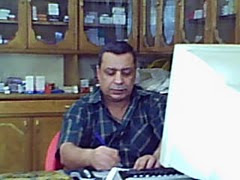How can a blister, a scratch or a wound in the skin of diabetes patients lead to % 50 of all cases of lower leg amputations?
The answer is in the nature of a diabetic skin and the stage at which treatment of the wound starts.Were that wound in the skin of a normal person, his blood would transport all the normal defense and healing elements required for healing the wound and repairing the skin, with the least medical care.
Nevertheless, in diabetes patients, the complications of diabetes involve thick blood, atherosclerosis and vessels fragility, all leading to poor blood supply of the leg specially the lower part inducing a dry THIN skin that is vulnerable to the least mechanical assault.
The other crucially important complication of diabetes that relates to wounds is diabetic neuropathy which affects nerves resulting in a reduced or abolished feeling in the feet, i.e. no pain or no signal to the patient who do not feel the injury.
The unnoticed scratch or wound in a diabetic leg gets bigger and deeper and affects the underlying tissues, such as muscles and tendons and becomes an opened gateway for infection which may reach the horrible stage of "gangrene" with which we may not avoid amputation.
When discovered, the wound receives intensive medical care that may reach skin substitution, in which a carrier material containing genetically engineered growth factors to encourage new tissue growth, and/or a synthetic form of natural proteins that help promote growth.
How can a diabetic avoid foot wounds:
There are many recommendations for diabetes patients to guard against wound formation and to discover them as soon as they are formed, like:
* Carefully dry your feet after bathing, specially between the toes.
* Don't walk around barefoot, not even indoors.
* Don't cut your nails yourself, have it done by a nurse.
* Avoid synthetic socks, wear cotton ones and wear the recommended shoes
* Avoid hyperglycemia and regulate your diet and treatment to adjust your blood Glucose.
The most important recommendations which represents the right clue to fight diabetes wounds and avoid prognosis to amputation stage are:
1- Ask your doctor or nurse to check your feet every visit.
2- INSPECT YOUR FEET DAILY FOR CUTS, WOUNDS, CALLUS OR INFECTED NAILS.
As this represents the starting point of extinguishing a small fire before it expands to burn the whole foot leading to its amputation.
Now, what if you apply a hydrating cream on your soles, feet and legs daily, instead of just inspecting them?. It is more safe and ensures a healthier skin that is not too fragile to break with the least external mechanical assaults.
Moreover, what if you repair any unnoticed cracks or scratches in your feet on daily basis? you want to know how?, it is simple :
Add Panthenol, Methionine, Honey, Propolis to your hydrating cream and this will endow your skin all the requirements for self repair.
Honey is used for wounds since very long times in the east, and now in England.
Propolis is clinically investigated in Europe, Japan and USA for use in wounds treatment.
Panthenol and metionine are nutritive materials that have a vital role in repairing the skin.
The Formula
Panthenol 2 g
Propolis 1 g
Hydrating cream 50 g
Part of this cream is admixed with equal part of honey and applied to the skin daily.
Sunday, September 03, 2006
Diabetes wounds, How To use HONEY to Avoid Amputations.
Labels:
amputations,
Diabetes,
Honey,
leg,
lower limb
Subscribe to:
Post Comments (Atom)

Useful Resources
- Amazon Goodies Review
- Heavy Cream Facial Masks
- Health News Headlines
- BEST WAY TO LOSE WEIGHT
- Subscribe to waheed-elqalatawy
- Search Amazon
- WEIL
- Social Bookmarking
- Fast Fat Burner
- GruntDoc
- Blogger TOS
- HHS
- FEMA-Individuals
- HHMI
- PNAS
- US-Today-Health
- Sciencemag-Med
- AgricultureDepart-US
- Plastic Surgery Photos
- BloggerNow
- Netscape-Health
- NIH
- msn-Health
- WHO
- REUTERS/health
- Count-2000-Calories
- ATKINS
- NewYorkTimes
- SanePR
- Feedburner
- Harvard-Public Health
- FDA-Diabetes
- Calorie-Count
- Blog Dirs

- <$BlogPreviousItemTitle$>
No comments:
Post a Comment